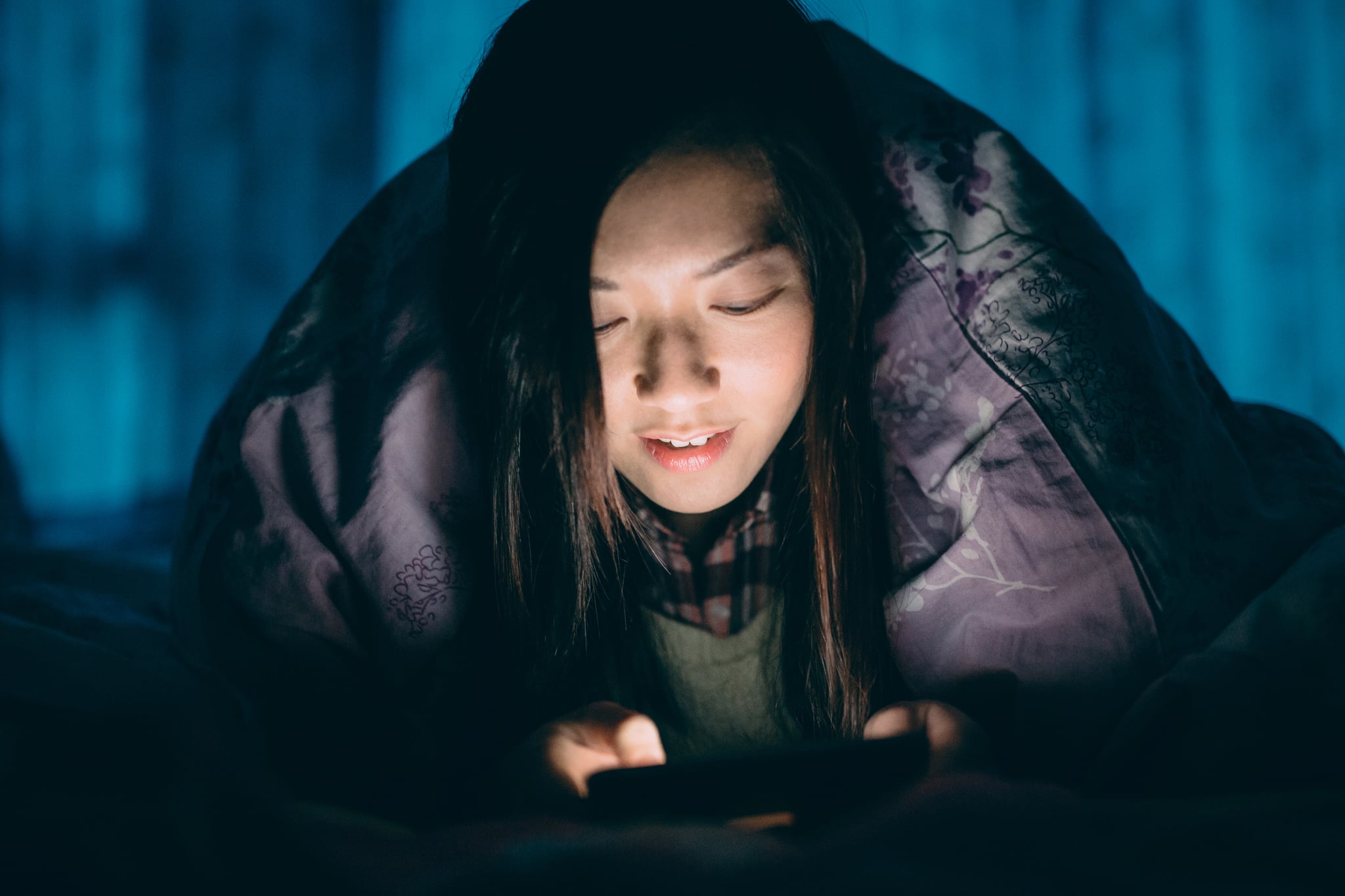Products You May Like

Next time someone accuses you of being a night owl, here’s a term to toss back at them: delayed sleep phase syndrome (DSPS). This is pretty much what it sounds like: your sleep schedule is “delayed,” or pushed back later than most people’s. You fall asleep later, you wake up later. You’re still getting a full night of sleep: it just starts and ends later than everyone else. “It’s a situation where you’re out of sync with the outside world,” said Rafael Pelayo, MD, professor of psychiatry and behavioral sciences at the Stanford Center For Sleep Sciences and Medicine. “When you’re left to your own schedule, you’re completely fine.”
Delayed sleep phase syndrome often comes to light during adolescence, but it’s actually caused by a genetic mutation in the “circadian clock gene,” CRY1. This genetic tendency is usually revealed when you go through puberty and begin staying up later, Dr. Pelayo told POPSUGAR. The good news? “It’s a treatable condition,” Dr. Pelayo said. “People who are predisposed to be this way can get back in sync with the outside world.
What Is Delayed Sleep Phase Syndrome?
Delayed sleep phase syndrome occurs when your natural sleep schedule starts and ends at a later time than what’s considered normal. For example, if most people go to bed at 10 p.m. and wake up at 6 a.m., you’re more comfortable going to bed at 1 a.m. and waking up at 9 a.m. Unlike insomnia, “delayed sleep phase syndrome is characterized by difficulty falling asleep, but not staying asleep,” Dr. Pelayo said. Once someone with delayed sleep phase syndrome starts pushing back their bedtime, they’ll find it extremely difficult to go to bed earlier again. According to Dr. Pelayo, delayed sleep phase syndrome is the second-most common sleep disorder in teenagers and young adults, behind generally insufficient sleep or sleep quality.
How Do You Know If You Have Delayed Sleep Phase Syndrome?
So what’s the difference between delayed sleep phase syndrome and just being a regular night owl? People who simply prefer going to sleep later are able to set an earlier bedtime if they absolutely have to, Dr. Pelayo said. People with delayed sleep phase syndrome, though, would have a much harder time with it — and they might not be able to fall asleep earlier at all.
DSPS is also a chronic issue that impairs your daytime activities, Dr. Pelayo said. “It’s impacting their day. It’s impacting their decisions in life.” You might choose a class schedule or even a job or career based on your inability to go to sleep or wake up earlier. “Now your choices in life are being restricted, because of this tendency that you have,” Dr. Pelayo said. “You’re coddling it in a sense, instead of addressing it and understanding how your body really works.”
Is Delayed Sleep Phase Syndrome Related to Depression?
Delayed sleep phase syndrome is often linked to mental health issues, including depression, OCD, and ADHD. If your delayed sleep phase syndrome leads to a lack of sleep overall, Dr. Pelayo noted, you might become irritable and inattentive, as well as depressed. People with DSPS also have a higher risk of self-harm or suicidal behaviors.
These side effects are a big reason why it’s important to identify and treat delayed sleep phase syndrome, Dr. Pelayo said. Bringing your sleep and wake routine in line with the rest of the world means you’ll be able to get more sleep, which can improve your mood.
How to Treat Delayed Sleep Phase Syndrome
Delayed sleep phase syndrome is treatable, but you have to be motivated to change your habits, Dr. Pelayo said. Here’s what to do:
- Give yourself an incentive to wake up earlier. Create a rule for yourself: you can do your favorite activity first thing in the morning, as long as you wake up at a given time. Dr. Pelayo said he always asks his DSPS patients what they do for fun, then gives them permission to do it as soon as they wake up, whether it’s video games, a Netflix episode, or scrolling on TikTok. The catch? If you don’t get up by that time, you can’t do that activity until the next day. “You’ve got to figure out what the real motivation is for somebody to wake up, and the motivation to go to sleep,” he said.
- Lock in a wake-up time. Once you’ve chosen your incentive, decide on a strict wake-up time. It’s easier to change when you wake up than to change your bedtime, Dr. Pelayo explained; you can control what time to set an alarm, but you can’t always control when you fall asleep, even if you lie down at the same time every night. The first week of locking in your wake-up time won’t be fun, Dr. Pelayo warned, but by the third or fourth week, it’ll start to become routine.
- Expose yourself to bright light as soon as you wake up. Open the window, turn on a light, look at your phone for a minute, or try a sunrise alarm clock. Looking at a bright light first thing in the morning tells your body it’s dawn and helps it start to shift its circadian rhythm.
- Try sleep medications if necessary. Dr. Pelayo noted that sleep supplements and medications should come last on the list of solutions for delayed sleep phase syndrome; they’re available and can be useful, but the other steps should come first. “I would not jump to medications unless I have a buy-in on the motivation and on the locked-in wake-up time,” he said.
If you’re still struggling with delayed sleep phase syndrome, consider seeing a sleep doctor for more treatment options.
